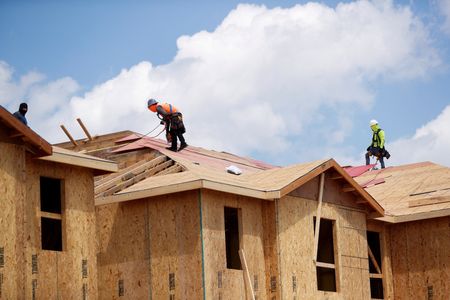
(Reuters) – U.S. homebuilding fell more than expected in September, led by a 13.1% decline in multi-unit projects, according to Census Bureau data released on Wednesday.
Housing starts dropped 8.1% to a seasonally adjusted annual rate of 1.439 million units last month. Data for August was revised down to a rate of 1.566 million units from the previously reported 1.575 million units. Economists polled by Reuters had forecast starts would come in at a rate of 1.475 million units.
The Federal Reserve’s aggressive monetary policy tightening has significantly weakened the housing market, with most indicators falling to levels last seen during the first wave of the COVID-19 pandemic in the spring of 2020. In contrast, other sectors of the economy, like the labor market, have shown resilience despite the U.S. central bank’s attempts to cool demand.
Since March, the Fed has lifted its benchmark policy rate from near zero to a range of 3.00%-3.25%, and the fed funds rate is now expected to end the year in the mid-4% range with inflation yet to show signs of abating materially.
Mortgage rates have risen even higher. The 30-year fixed mortgage rate averaged 6.94% last week, the highest since 2002, up from 6.81% a week earlier, according to the Mortgage Bankers Association.
Permits for future home construction rose 1.4% to a rate of 1.564 million units in September. Residential fixed investment declined at its steepest pace in two years in the second quarter, contributing to the second straight quarterly drop in gross domestic product during that period.
Homebuilding is likely to remain on the back foot for the rest of the year. A survey on Tuesday showed the National Association of Home Builders/Wells Fargo Housing Market sentiment index fell for the 10th straight month in October.
(Reporting by Dan Burns; Editing by Paul Simao)

